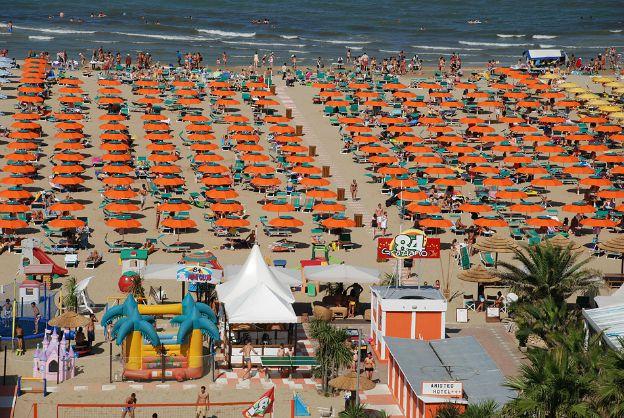Ferragosto in Italy: Origins and Traditions
ITA:

Celebrated on August 15, Ferragosto may well be considered the height of the Italian summer. Many Italians still take their summer vacation around this time, with the cities emptying and the beaches filling up.
Ferragosto, which coincides with the Catholic feast of the Assumption of Mary, is a holiday that goes back to Roman emperor Augustus’ times. Several festivals took place during the month of August to celebrate the harvest; in 18 BCE, Augustus introduced the 'Feriae Augusti' to connect them all and provide a longer period of rest after the harvest, a time of intense agricultural labor.
During the ‘Augustali’ celebrations, horse races were organized across the Roman Empire; such ancient traditions remain almost unchanged today (just think of Siena’s Palio dell'Assunta, taking place on August 16).
The popular tradition of taking a trip at Ferragosto was introduced with the Fascist regime, which, in the second half of the 1920s, began organizing hundreds of trips through its recreational organizations, even setting up the "People's Trains of Ferragosto", made available at discounted prices. The initiative gave the chance to less affluent people to visit Italian cities or spend time at seaside and mountain resorts. The offer was limited to August 13, 14 and 15.
The tradition has continued to this day and, among beach games, water balloons, bonfires and dancing, Ferragosto has become a true celebration of summer. A key moment of the day is the traditional Ferragosto lunch, usually a barbecue or picnic with family and friends.
Since Ferragosto is also a Catholic feast, established in the 5th century CE, the day is a national holiday in Italy.
Celebrato il 15 agosto, Ferragosto può ben essere considerato il culmine dell'estate italiana; molti italiani vanno in vacanza in questo periodo, con le città che si svuotano e le spiagge che si riempiono.
Ferragosto, che coincide con la festa cattolica dell'Assunzione di Maria, è una festa che risale ai tempi dell'imperatore romano Augusto. Numerosi festival avevano luogo durante il mese di agosto per festeggiare il raccolto; nel 18 aC, Augusto introdusse le 'Feriae Augusti' per collegarli tutti e offrire un periodo più lungo di riposo dopo il raccolto, un momento di intenso lavoro agricolo.
Durante le celebrazioni 'Augustali', corse di cavalli erano organizzate in tutto l'impero romano; tali antiche tradizioni rimangono pressoché invariate oggi, basti pensare al Palio dell'Assunta di Siena, che si tiene il 16 agosto.
La tradizione di fare un viaggio a Ferragosto fu introdotta con il regime fascista, che, a partire dagli anni ’20 del 1900, iniziò a organizzare centinaia di viaggi attraverso le sue organizzazioni ricreative, con la creazione dei "Treni popolari di Ferragosto", messi a disposizione a prezzi scontati. L'iniziativa dava la possibilità alle persone meno benestanti di visitare città italiane o trascorrere del tempo in località balneari e montane. L'offerta era limitata ai giorni del 13, 14 e 15 agosto.
La tradizione è continuata fino ai giorni nostri e, tra giochi in spiaggia, gavettoni, falò e serate di ballo, Ferragosto è diventato una vera e propria festa dell’estate. Momento fondamentale della giornata rimane il pranzo di Ferragosto, di solito una grigliata o un pic-nic.
Poiché Ferragosto è anche una festa cattolica, istituita nel 5° secolo d.C., il 15 è una festa nazionale in Italia.











